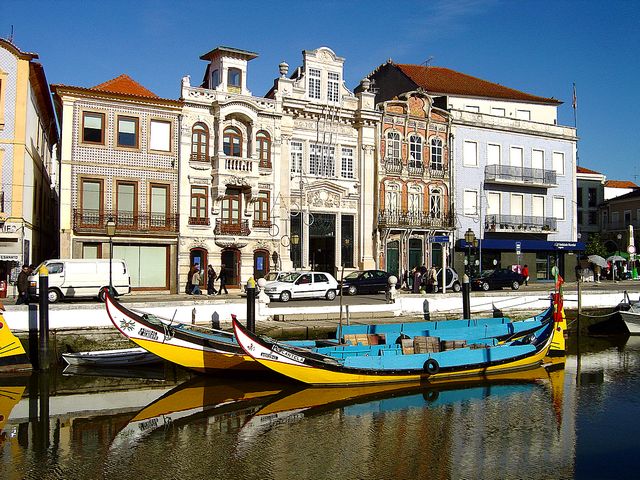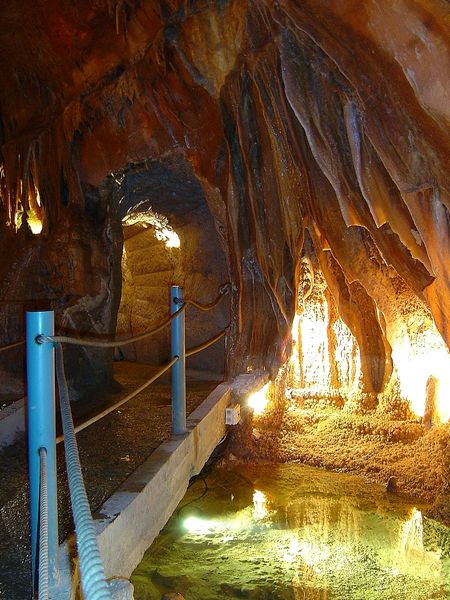The town and municipal area of Albufeira in the district of Faro, Algarve Portugal, on the south coast of Portugal. It covers an area of approximately 140 km² with more than 30.000 resident inhabitants.
July 25, 2008
July 1, 2008
April 14, 2008
April 6, 2008
Oporto

Bridges and port wine are what characterises Oporto, Portugal’s second largest city after Lisbon. The main reason tourists or travellers visit Oporto is to sample its legendary port wine.
Also you can visit right next to Oporto, Vila Nova de Gaia or you may choose to take a river cruise along the Douro. The whole district is filled with prosperous cities, as industry and commerce thrive there, however you can drive along many calm roads with wonderful views over the river or enjoy a rugged and still unspoilt coastline.
Oporto is also known for its characteristic sailboats, the “Barcos Rabelos”, which used to ship Port downstream from the vineyards.
More Oporto pictures
Photo by: Sitomon
Evora

Évora was wrested from the moors by Geraldo the Fearless (geraldo giraldes o Sem Pavor) in 1166 and flourished as one of the most dynamic cities in the Kingdom of Portugal during Middle Ages. The court was resident here for long spells and Évora became the scene for many royal weddings and a place where many important decisions were made. Particularly thriving during the Avis Dynasty (1385-1580), it was formerly a major centre for the humanities. The university was founded by the Company of Jesus in 1551. In the 18th century, the Jesuits, was expelled, the university was closed and Evora went into decline. The university was reopened in 1973.
The many monuments erected by the major artists of each period now testify to Évora’s lively cultural, artistic and historical past. The variety of architectural styles (romanic, gothic, manueline, mannerist, baroque), the palaces and even the squares and narrow streets are all part of the rich heritage of this museum-city.
Today, the beautiful historical centre has about 4000 buildings and a surface of 105 ha.
Picture By: PhillipC
Viana do Castelo

Viana do Castelo is a city and a municipality, seat of the district of Viana do Castelo, in Norte region, Portugal. The city proper had 36,148 (INE, 2001)[1] inhabitants, and the municipality has a total population of 91,238 inhabitants (2006) for a total area of 318.6 km².
It is located at the mouth of the Rio Lima. Photo by rivo
Azores

The archipelago of Azores lie in the Palearctic ecozone, forming a unique biome the macaronesian subtropical laurissilva, with many endemic species of plants. The uniqueness of the islands gives them a very distinctive aspect.
The nine islands have a total area of 2,346 km² (906 sq mi). Their individual areas vary between São Miguel’s 759 km² (293 sq mi) and Corvo’s 17 km² (7 sq mi). Three islands (São Miguel, Pico and Terceira) are bigger in size than Malta (composed of three different islands), São Miguel Island alone being twice as big.
The nine islands are divided into three groups:
* The Eastern Group (Grupo Oriental) of São Miguel, Santa Maria and Formigas Islets
* The Central Group (Grupo Central) of Terceira, Graciosa, São Jorge, Pico and Faial
* The Western Group (Grupo Ocidental) of Flores and Corvo.
Picture of Seven Cities Lake “Lagoa das sete cidades” by: MJorge
Coimbra

Coimbra is the former capital of Potugal during the first dinasty period and home to the University of Coimbra, the oldest academic institution in the Portuguese-speaking world. Like most university cities, it comprises a large number of dislocated students from outside Coimbra among its residents.
Coimbra is one of the most important urban centers of Portugal after the much larger Lisbon Metropolitan Area and Porto Metropolitan Area conurbations, and plays a role as the chief urban centre of the central part of the country. The city contains important archeological remains of structures dating from the time when it was the Roman town of Aeminium, such as its well-preserved aqueduct and cryptoporticus, as well as from the period when it served as the capital of Portugal (from 1139 to about 1260). In the Late Middle-Ages, declining as the political centre of the Kingdom of Portugal, Coimbra began to evolve into a major cultural centre with the foundation of the University of Coimbra in 1290. The university, one of the oldest in Europe, attracts visitors from around the world due to its monumental buildings and history, making the city an important touristic destination.
Photo by: Truques
Braga – Bom Jesus

Braga is the oldest archdiocese and one of the major Portugal cities. Braga is also the center of the Greater Metropolitan Area of Minho with a population of 798,137 one of the fastest growing urban areas in the European Union. Under the Roman Empire, as Bracara Augusta, it was capital of the province Gallaecia. The urban area extends from the (river) Cavado to the (river) Este. Braga is serviced by regional and fast trains to Porto and Lisbon. The city of Oporto (Porto) is about 53 km. In this picture a view from “Bom Jesus do Monte”
Photo de Ahron de Leeuw more Braga Pictures
March 21, 2008
Aveiro

Aveiro is known by the Portuguese Venice, due to being enclosed by lovely and romantic channels. Instead of Gondolas were we have Moliceiros, but the enchantment of the City is amazing.
More Aveiro pictures
Image by Portuguese_eyes
Guimarães Castle

The Castle of Guimarães is on basis of the foundation of Portugal like independent nation, from Spain.
Read more about Castle of Guimarães history
Photo by Portuguese_eyes
March 16, 2008
Alvados Caves

The Serra D’Aire e Candeeiros near Lisbon is known for it’s inumerous caves, between them these Caves of Alvados in the picture.
Photo by Portuguese_eyes
Madeira Island

Madeira Island the Portugal best known as Pearl of the Atlantic, the floating Garden.
They are a fantastic vacation destiny, due to his temperate climate, beautiful beaches good food and amazing sceneries.
A view from: Porto da Cruz by Portuguese_eyes
January 16, 2008
Alentejo landscape

A common landscape of the rural Alentejo, Portugal.
More about Alentejo – Portugal
Photo by: sparkyfaisca



